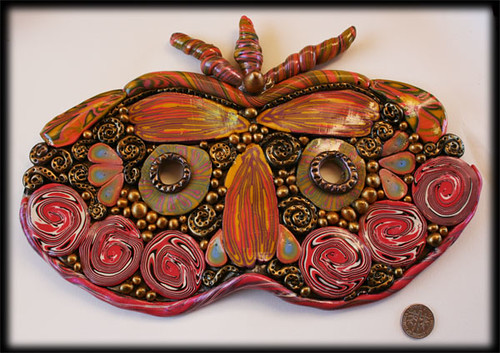Polymer clay was originally developed during the late 1930’s in Germany. In the1960’s, Eberhardt Faber bought and began marketing the product under the name FIMO.
Polymer clay is essentially polyvinyl chloride with plasticizer to make it pliable. It is not traditional “earth” clay. Polymer clay is cured at low temperatures in a home oven. It is recommended to have an oven (IE a toaster oven) dedicated to curing the clay.
Curing it is safe to when manufacturer’s instructions are followed. However, if heated to too high of a temperature, the polymer clay will give off some nasty fumes. Ask me how I know. Ask me about the batch of beads I burnt last week. . .
Polymer clay comes in a wide array of colors and is incredibly versatile medium. I use it mostly for for jewelry making. It is also wonderful medium for sculpture (something my muse is screaming at me to explore). And, because of its low curing temperature (275-300 degrees) covering items such as boxes, bottles, pens and switch-plates is popular with polymer clay artists. The possibilities are only limited by ones imagination! It is however, NOT recommended to use for surfaces that are intended to be eaten off of like plates and bowls.
 |
| Red With Envy by Laughing Moon Arts |
The most common brands in the United States are Sculpey/Premo by Polyforms, Fimo by Eberhard Faber and Kato Polyclay by Van Aken.
Cernit and Pardo are not as common in the US, but are gaining a following. Knightwork has been experimenting with Pardo and has made some beautiful canes with it.
Here are a few websites to begin exploring the possibilities of polymer clay:
The three most common polymer clay brands:
Kato Polyclay
A couple of non-polymer clay comments. My internet went down yesterday. And my Facebook page hasn't been working since last night. FRUSTRATING! I love/hate computers.
A couple of non-polymer clay comments. My internet went down yesterday. And my Facebook page hasn't been working since last night. FRUSTRATING! I love/hate computers.


No comments:
Post a Comment